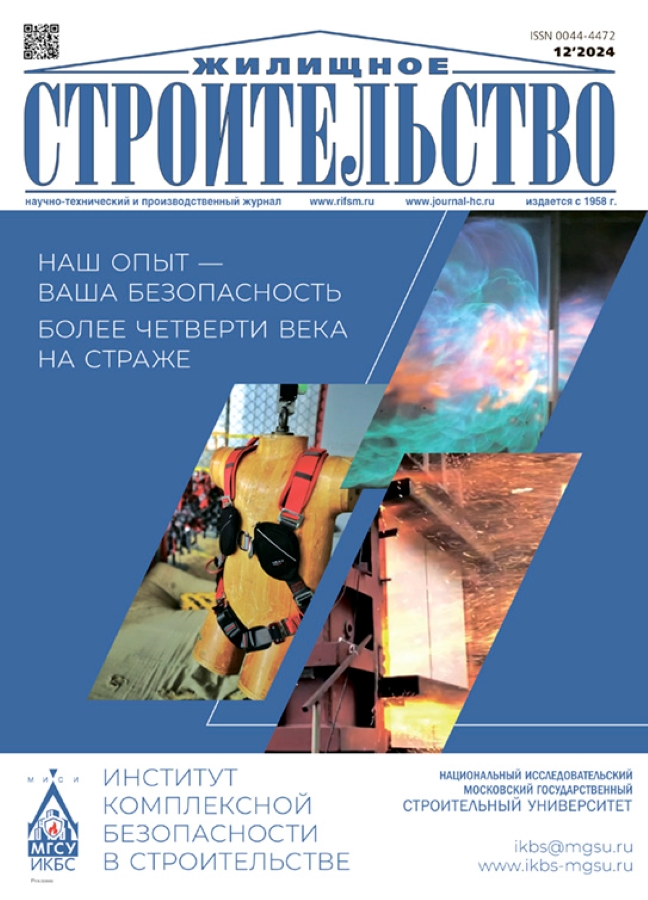About one type of oriental residential building in the city of Ani, the medieval capital of Armenia
- Authors: Baeva O.V.1, Kazaryan A.Y.1
-
Affiliations:
- National Research Moscow State University of Civil Engineering
- Issue: No 12 (2024)
- Pages: 62-70
- Section: Articles
- URL: https://rjmseer.com/0044-4472/article/view/646405
- DOI: https://doi.org/10.31659/0044-4472-2024-12-62-70
- ID: 646405
Cite item
Abstract
The study of architectural planning structure of two houses discovered in Ani during archaeological work in recent decades was undertaken in order to clarify their typological characteristics, architectural features and their place in the history of housing construction in the East. Acquaintance with the publications of archaeologists, the field surveys of objects in Ani undertaken by the authors led to the identification of a complex of stable features in these buildings, which made it possible to identify a range of typological analogies in the 12th–13th palace architecture of Armenians, Georgians, Seljuks of Asia Minor: the palace of Paron in Ani, the palace in Geghuti, built by the Georgian king George III around 1156, the palaces of Kubadabad, built in the first half of the 13th century. In the early Middle Ages, this idea was the basis for urban estates of the 19th–10th centuries in the Semirechye region of the Central Asia, there were still Sogdians. In some forms, in the structure of a four- or two-column covered courtyard, most likely, the embodiment of the central cell of a traditional Armenian residential building was added to the general idea. Two variants of creating such a cell could be presented in the two studied houses of Ani: with four columns in the corners of the central square and a two-column type based on the columns supported of opposing wooden beams. The probable prototypes of the general compositional idea of these houses in the architecture of Parthia and Sasanian Iran have been identified.
Full Text
About the authors
O. V. Baeva
National Research Moscow State University of Civil Engineering
Author for correspondence.
Email: olabaeva@mail.ru
Doctor of Art Study
Russian Federation, 26, Yaroslavskoe Highway, Moscow, 129337A. Yu. Kazaryan
National Research Moscow State University of Civil Engineering
Email: olabaeva@mail.ru
Doctor of Art Study, Academician of RAASN
Russian Federation, 26, Yaroslavskoe Highway, Moscow, 129337References
- Арутюнян В.М. Հարությունյան Վ.Մ. Անի քաղաքը (Город Ани). Ереван: Айпетрат, 1964. 96 с. Harutyunyan V.M. Ani kaghake [The city of Ani]. Yerevan: Haypetrat. 1964. 96 p.
- Баева О. Ани: градостроительная идея Нового города и ее преемственность // Проект Байкал. 2023. № 20 (76). С. 184–189. EDN: MLXMCH. https://doi.org/10.51461/issn.2309-3072/76.2170. Baeva O. Ani: An urban planning idea for the New City and its continuity. Projekt Baikal. 2023. No. 20 (76), pp. 184–189. (In Russian). EDN: MLXMCH. https://doi.org/10.51461/issn.2309-3072/76.2170
- Баева О.В., Казарян А.Ю. Жилища средневекового города Ани. Историография и результаты исследований // Актуальные проблемы теории и истории искусства. 2022. № 12. С. 123–134. EDN: ZAPIOO. https://doi.org/10.18688/aa2212-01-07. Baeva O.V., Kazaryan A.Yu. Dwellings of the Medieval City of Ani. Historiography and Research Results. Aktual’nye problemy teorii i istorii iskusstva. 2022. No. 12, pp. 123–134. (In Russian). EDN: ZAPIOO. https://doi.org/10.18688/aa2212-01-07
- Орбели И.А. Избранные труды. Ереван: АН АрмССР, 1963. 683 с. Orbeli I.A. Izbrannye trudy [Selected works]. Yerevan: Academy of Sciences of the Armenian SSR, 1963. 683 p.
- Марр Н.Я. Ани. Книжная история города и раскопки на месте городища. М.; Л.: Гос. соц.-эк. изд-во, 1934. 136 с. Marr N.Ya. Ani. Knizhnaya istoriya goroda i raskopki na meste gorodishcha [Ani. Book history of the city and excavations at the site of the settlement]. Moscow; Leningrad: State Socio-economic Publishing House. 1934. 136 p.
- Karamağaralı B. 1992–1994 Ani Kazıları [1992–1994 Ani excavations] // XVII. Kazı Sonuçları Toplantısı, II (29 Mayıs – 02 Haziran 1995). Ankara, 1996. S. 509–538. (In Turkish).
- Karamağaralı B. 1995 Ani Kazısı [1995 Ani excavations] // XVIII. Kazı Sonuçları Toplantısı, II (27–31 Mayıs 1996). Ankara, 1997. S. 577–589. (In Turkish).
- Karamağaralı B. The Discovery of two Medieval Houses in Ani // Erdem. 1999. Cilt: 12-Sayı: 34. Р. 129–134.
- Karamağaralı B., Azar T., Akgül N. Les activités archéologiques turques à Ani (1989-2000). Dans le livre: Capitale de l’Arménie en l’An Mil. Catalogue d’exposition dans le Pavillion des Art, 7 février – 13 mai 2001. Paris: Pavillon des Arts, 2001. P. 62–65.
- Çoruhlu Y. Yeni Dönem Ani Kazıları 2006–2007 Çalışmaları [New Period Sudden Excavations 2006–2007 Studies]. 30. Kazı Sonuçları Toplantısı, II (26–30 Mayıs 2008). Ankara, 2009. P. 301–326. (In Turkish).
- Çoruhlu Y. Kars/Ani Kazıları 2008 Yılı Çalışmaları [Kars/Ani Excavations 2008 Studies]. 31. Kazı Sonuçları Toplantısı, III (25–29 Mayıs 2009). Ankara, 2010. P. 145–178. (In Turkish).
- Çoruhlu Y. Kars/Ani Kazıları 2009 Yılı Çalışmaları [Kars/Ani Excavations 2009 Studies]. 32. Kazı Sonuçları Toplantısı, II (24–28 Mayıs 2010). Ankara, 2011. P. 178–197 (In Turkish).
- Arslan M. Anadolu’da ilk selçuklu mimarisi: Ani [The first Seljuk architecture in Anatolia: Ani]. Konya: Palet Yayinlari, 2021. 246 p. (In Turkish).
- Баева О.В., Казарян А.Ю. Дворцовые постройки Ани. Предварительные итоги изучения // Актуальные проблемы теории и истории искусства. 2023. Вып. 13. C. 185–199. https://doi.org/10.18688/aa2313-2-15. Baeva O.V., Kazaryan A.Yu. Palace Architecture of Ani: Preliminary Results of the Study. Aktual’nye problemy teorii i istorii iskusstva. 2023. Iss. 13, pp. 185–199. (In Russian). https://doi.org/10.18688/aa2313-2-15
Supplementary files



















